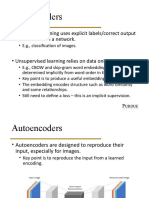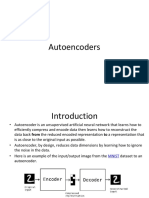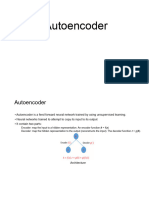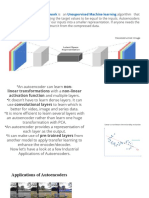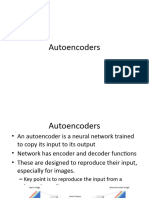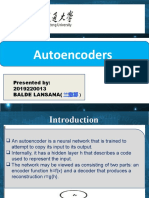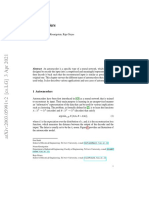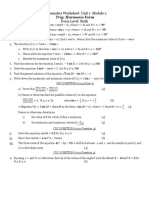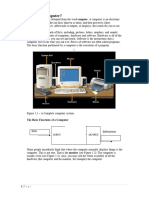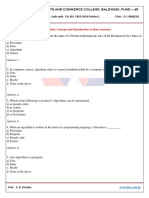0% found this document useful (0 votes)
24 views27 pagesLecture 23b Auto Encoder
Autoencoders are unsupervised neural network architectures that learn compressed representations of input data through a bottleneck structure, enabling dimensionality reduction. They consist of an encoder, a bottleneck, and a decoder, and can be trained to minimize reconstruction error without needing explicit labels. Various types of autoencoders, such as undercomplete, sparse, denoising, and contractive autoencoders, utilize different techniques to enhance feature extraction and robustness against noise or overfitting.
Uploaded by
Shahzaib KhanCopyright
© © All Rights Reserved
We take content rights seriously. If you suspect this is your content, claim it here.
Available Formats
Download as PPTX, PDF, TXT or read online on Scribd
0% found this document useful (0 votes)
24 views27 pagesLecture 23b Auto Encoder
Autoencoders are unsupervised neural network architectures that learn compressed representations of input data through a bottleneck structure, enabling dimensionality reduction. They consist of an encoder, a bottleneck, and a decoder, and can be trained to minimize reconstruction error without needing explicit labels. Various types of autoencoders, such as undercomplete, sparse, denoising, and contractive autoencoders, utilize different techniques to enhance feature extraction and robustness against noise or overfitting.
Uploaded by
Shahzaib KhanCopyright
© © All Rights Reserved
We take content rights seriously. If you suspect this is your content, claim it here.
Available Formats
Download as PPTX, PDF, TXT or read online on Scribd
/ 27














